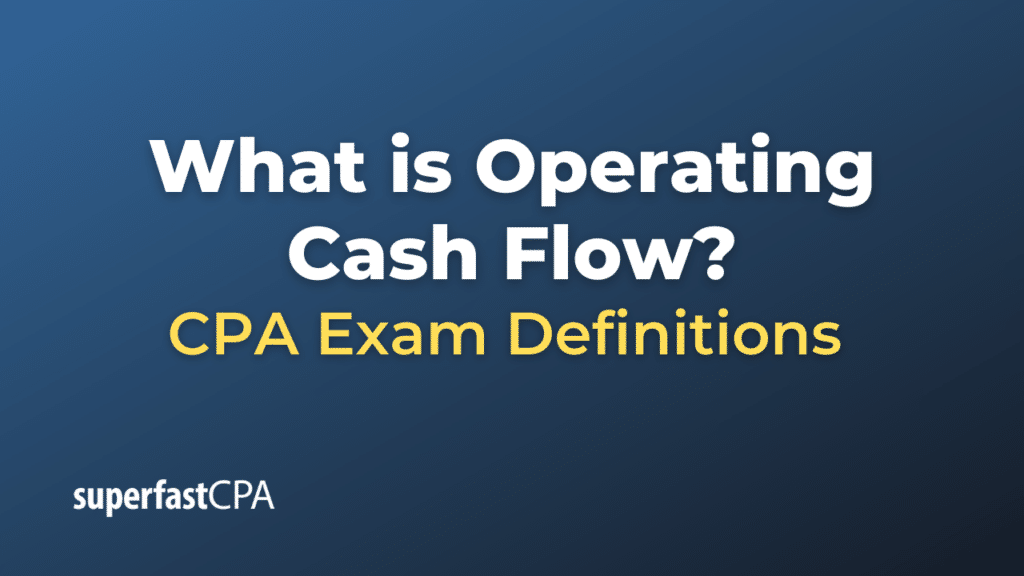Operating Cash Flow
Operating Cash Flow (OCF), also known as cash flow from operations, is a measure of the cash generated by a company’s normal business operations. It indicates whether a company is able to generate sufficient positive cash flow to maintain and grow its operations.
Operating cash flow can be calculated using the indirect method or the direct method:
- Indirect Method: Start with net income and then add back non-cash expenses (like depreciation and amortization), and adjust for changes in working capital (like accounts receivable, accounts payable, inventory, and accrued expenses).The formula looks something like this:Operating Cash Flow = Net Income + Depreciation + Changes in Working Capital
- Direct Method: Add up all the cash payments and receipts, including cash received from customers and cash paid to suppliers and employees.
Regardless of the method used, the operating cash flow provides an important perspective on a company’s financial health. It shows if the company is able to generate enough cash from ongoing operations to meet its operating expenses and invest in its business. A positive operating cash flow is a good sign as it indicates that the company’s core business operations are sound and profitable. A negative operating cash flow, on the other hand, may signal problems with profitability or liquidity.
It’s worth noting that the operating cash flow differs from net income as the latter can be influenced by non-cash items and can be subject to various accounting practices and regulations. Hence, many investors and analysts consider the operating cash flow to be a more accurate measure of a company’s financial performance.
Example of Operating Cash Flow
Let’s take a hypothetical example of a company, say, “TechCorp Inc.” and calculate its operating cash flow. We’ll use the indirect method, which is the most commonly used method in practice:
Net Income for the year: $500,000
Non-cash Expenses:
- Depreciation: $50,000
- Amortization: $20,000
Changes in Working Capital:
- Accounts Receivable increased by $30,000 (This is a use of cash, as the company hasn’t yet received payment for these sales.)
- Inventory increased by $20,000 (This is also a use of cash, as the company has invested in materials or products it hasn’t sold yet.)
- Accounts Payable increased by $10,000 (This is a source of cash, as the company has received goods or services but hasn’t paid for them yet.)
Given these figures, we can calculate Operating Cash Flow:
Operating Cash Flow = Net Income + Depreciation + Amortization – Increase in Accounts Receivable – Increase in Inventory + Increase in Accounts Payable
Operating Cash Flow = $500,000 + $50,000 + $20,000 – $30,000 – $20,000 + $10,000 = $530,000
So, the operating cash flow for TechCorp Inc. for this year is $530,000. This suggests that TechCorp has generated $530,000 in cash from its regular business operations during the year. This cash can be used to pay for its operating expenses, invest back into the business, return money to shareholders, pay off debt, or save for future use.













